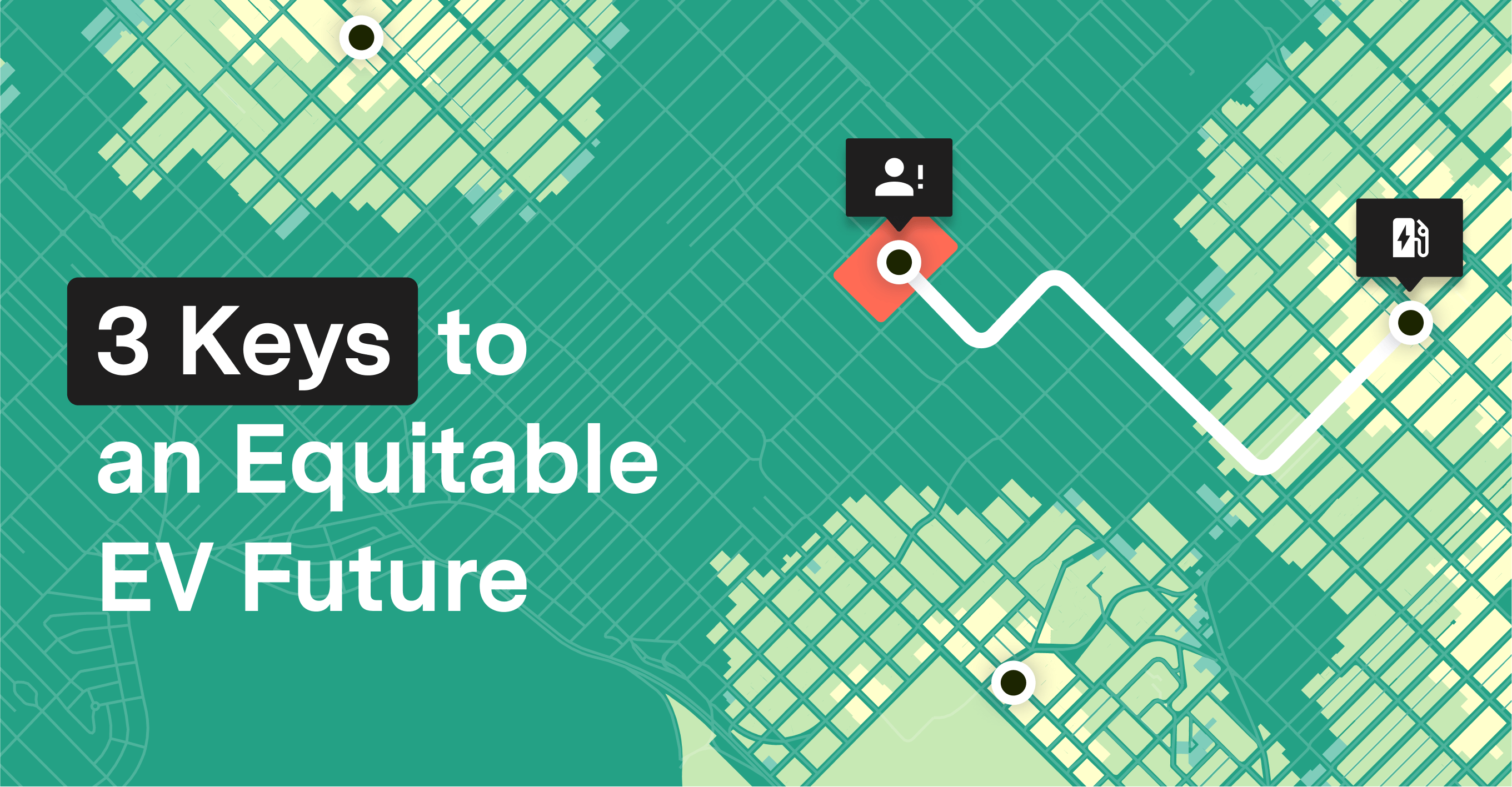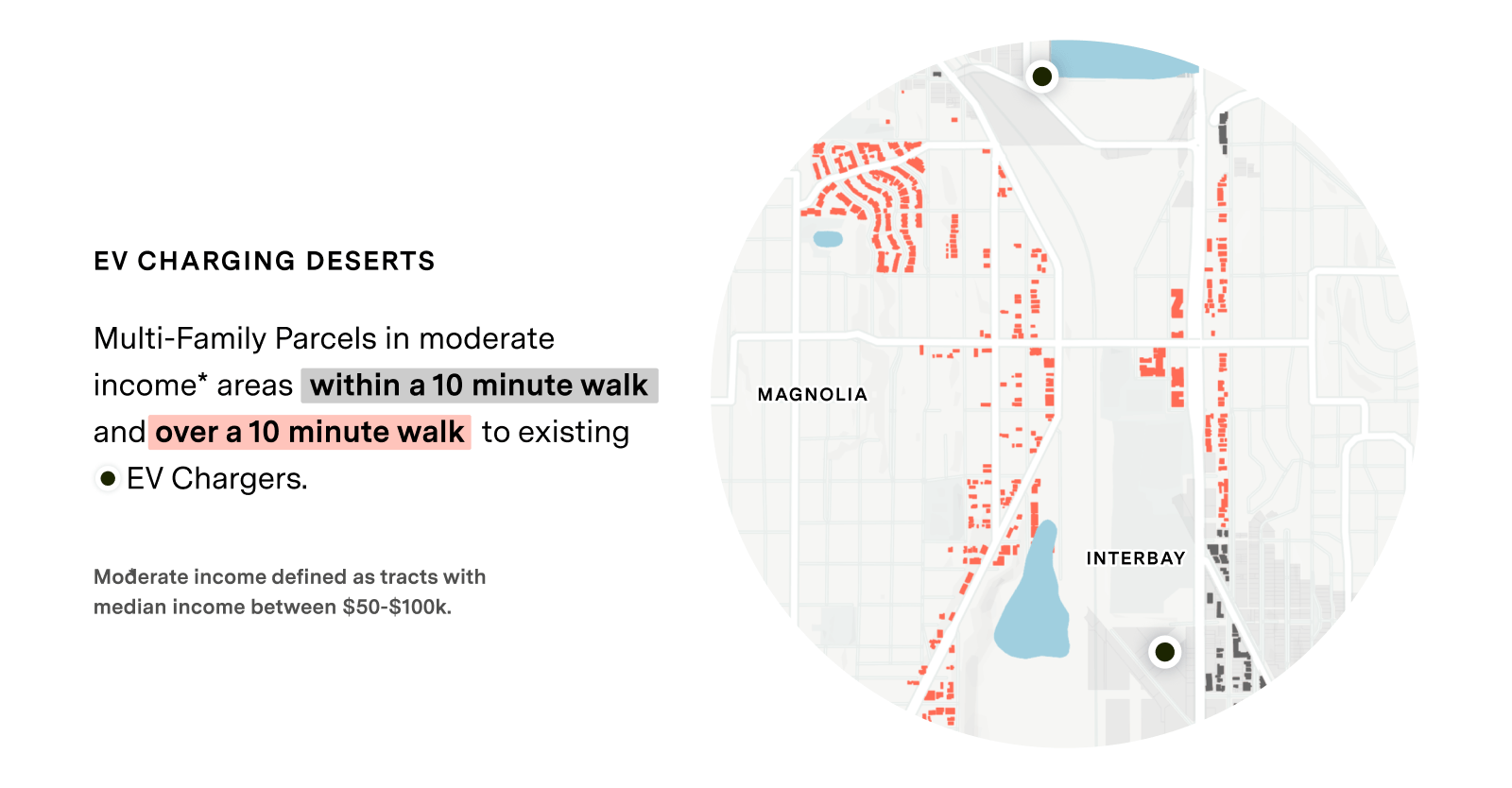
Paving the way to broad EV adoption requires accessibility
States and localities across the country are turning to electronic vehicles (EVs) to drastically reduce our nation’s collective carbon footprint. Policies set across all levels of government aim to make EVs the new normal on a rather ambitious timeline – in less than a decade.
Biden’s recent Bipartisan Infrastructure Law is allocating $5 billion over the next 5 years to the National Electric Vehicle Infrastructure Program (NEVI), signaling the government’s commitment to powering the EV road revolution. Some states, like California, are taking this commitment further by phasing out and ultimately prohibiting the sale of gas-powered vehicles by 2035.
Climate policy, like both the NEVI program and state orders by Governor Newsom, don’t just set ambitious goals to reduce emissions, they do so with an emphasis on equity. It is increasingly recognized that the most vulnerable communities that experience the impacts of climate change the most; conversely, we can generate outsized returns on investments by prioritizing investments in more vulnerable communities. Embedding equity plans into climate change policies is a great first step to ensure funding and resources are directed to disadvantaged and underserved areas.
The same is true for programs like NEVI. For there to be an equitable EV future, everyone must have access to the benefits of EVs and EV infrastructure. Unfortunately, a harsh reality is emerging that could hinder the benefits of transportation electrification from reaching all communities.
The California Energy Commission has identified a massive gap in the number of public and shared EV chargers needed to meet the demands of the 7.5 million passenger EVs expected to hit California’s roads in the next decade. In fact, the state needs approximately 1.2 million additional chargers to enable widespread EV adoption by 2030. California’s challenge is unfortunately not unique. Major cities across the country are currently struggling to bridge gaps in EV charging locations, particularly in disadvantaged communities.
As agencies and utilities begin EV infrastructure planning and deployment, there are many factors to consider in order for EV deployment to be equitable. Here are three key areas that can help lead to an equitable EV future.
Three Keys to an Equitable EV Future
1. Define the Barriers to EV Ownership
During project planning, utilities and infrastructure developers must consider how EV benefits and burdens vary across specific populations and communities. Having a complete view of barriers to adoption is critical. Income is currently the primary barrier to EV ownership for most people. While focusing EV investments in low-income areas is certainly important, other barriers should also be considered to ensure an equitable EV future for all.
Historically, race has played a significant role in determining access to resources, such as loans, mortgages, and credit. Racial inequities permeated transportation policies and urban planning for decades, resulting in communities of color being relegated to areas close to highways, industrial areas, and transportation depots. As such, communities of color are disproportionately burdened by heavy pollution and the effects of climate change.
To ensure disadvantaged communities are included in EV infrastructure planning, several states and utility commissions are issuing orders to prioritize EV infrastructure in low-income neighborhoods, communities of color, rural areas, and the fleets of utility vehicles and public transit buses. By defining the unique barriers to EV ownership for each community, planners will have a better understanding of how to deploy EV infrastructure equitably.

2. Identify Current Electric Vehicle Charging Deserts
While personal EV ownership is expected to surge to over 18 million by 2030, up from approximately 2 million today, reports show that current EV owners typically earn an annual household income of more than $100,000. Current EV owners are more likely to charge their EVs overnight at home or during the day at their place of work.
In comparison, the lack of charging locations in convenient public areas and in most multifamily housing make EV ownership inaccessible for many people. Studies show the majority of charging deserts are disproportionately located in low-income neighborhoods and communities of color. This oversight has occurred primarily because private companies are not incentivized to invest in areas with low EV adoption and use.
The implications of charging deserts range from minor inconveniences to impacting livelihoods. Currently, identifying where EV charging deserts are located is a critically important, but labor-intensive task. Charging deserts are identified by the range between an EV and the nearest charging station. Without data insights to precisely pinpoint where charging deserts are located, deploying EV infrastructure equitably will be challenging.
3. Inform Charger Deployment with Critical Relational Insights
EV infrastructure planning is not as simple as placing chargers along major throughways and in low-income communities. To build a truly effective and equitable EV infrastructure plan, organizations must connect relational insights such as land use characteristics, vulnerable populations, business zones, and economic opportunities.
Currently, most EV owners charge at home or work, which is usually the cheapest and most convenient charging option. But for those living in low-income and multi-family housing, home charging is often not an option. Designated charging spots and home charging stations can cost thousands of dollars, making EV ownership out of reach for many property owners and residents. EV infrastructure site selection should prioritize multi-dwelling units to widen the opportunity to ‘charge from home’ for residents who do not own or live in a single-family dwelling with access to a charging station.
Strategically placing EV infrastructure can also create opportunities to boost the local economy by driving traffic to certain business zones that may have otherwise been avoided by EV drivers due to the lack of charging stations. The time it takes to charge a vehicle will have ripple effects on the local economy, similar to gas stations.
There is a road to electrification for all
Managing equitable EV deployment is complex, but with the right data and insights, planners can make better decisions more quickly. UrbanFootprint is the world’s first Urban Intelligence Platform, facilitating a deep dive into relational insights such as income, transit access, land use, existing infrastructure, existing charging stations, demographics, and more. UrbanFootprint solutions are uniquely positioned to support local governments, utilities, consultants, infrastructure providers, and most importantly – the communities they serve.








